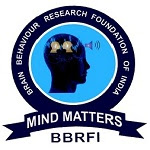Prince et al. (1998) has defined culture as “the totality of habits, beliefs, ideas, attitudes and values, as well as the behaviors that spring from them (language, art, eating habits, marriage patterns, and so forth)”. The World Health Organization or WHO (2014) has highlighted “the need to specifically address social determinants of mental health, and recognition of the influence of social determinants on mental health”. The study of mental disorders across cultures is of value because mental illnesses are generally from a universal point of view but cultural implications are present and hence they should be recognized to fit specific needs of the populations.
Social exclusion refers to the inability of our society to give all groups of individuals resources to reach their full potential. Important variables that indicate exclusion from social and economic opportunities are economic capability (poverty), age, gender, caste and religion, etc. In the Indian context, caste can be broadly considered as a proxy for socio-economic status. Scheduled caste, Scheduled tribes and the other backward castes are socially disadvantaged groups and they have a higher probability of living under poverty and adverse conditions.
Only a small number of studies have examined links between social disadvantage and mental health. (Jadhav and Jodhka, 2012). Some studies are given below:-
Promoting mental health while addressing its social determinants also helps in preventing mental disorders and related suicides. We will only be prepared in future to deal with pandemic like situations if we all work towards reducing social inequalities in the coming years and if we put in place equitable and strong social protection systems. A population specific mental health approach will reduce disparities and serve as a protective factor for the development of mental disorders. It will also allow mental health care to be made more inclusive and accessible to everyone.
Written by:
Social exclusion refers to the inability of our society to give all groups of individuals resources to reach their full potential. Important variables that indicate exclusion from social and economic opportunities are economic capability (poverty), age, gender, caste and religion, etc. In the Indian context, caste can be broadly considered as a proxy for socio-economic status. Scheduled caste, Scheduled tribes and the other backward castes are socially disadvantaged groups and they have a higher probability of living under poverty and adverse conditions.
Only a small number of studies have examined links between social disadvantage and mental health. (Jadhav and Jodhka, 2012). Some studies are given below:-
- In a study done in Chennai, Poongothai et al. (2009) found that both individuals with lower socioeconomic status and of female gender were associated with depression. These findings have been similar to the ones reported from the state of Goa in India (Patel et al., 1999).
- Housen et al. (2017) found in a study that 41% of the population of the Kashmir valley had probable depression, and exposure to traumatic events was significantly associated with mental illness.
- Mathias et al. (2015) has found higher levels of depression among people from lower castes compared to higher castes in Dehradun district of Uttarakhand which is a state in north India.
- In Nepal, which is a country with a similar caste structure as India, Hawes et al. (2016) has found that Dalits are more likely to experience depressive episodes in comparison to higher caste Brahmins and Chhetris.
- Spears (2016) has used data from a survey conducted in villages in the 13 districts of North India to show that Scheduled Castes report lower life satisfaction than people from other castes.
Promoting mental health while addressing its social determinants also helps in preventing mental disorders and related suicides. We will only be prepared in future to deal with pandemic like situations if we all work towards reducing social inequalities in the coming years and if we put in place equitable and strong social protection systems. A population specific mental health approach will reduce disparities and serve as a protective factor for the development of mental disorders. It will also allow mental health care to be made more inclusive and accessible to everyone.
Written by:
Kashvi Juneja
References:
- Patel, V., Flisher, A. J., & Cohen, A. (2008). Social and cultural determinants of mental health. Essential Psychiatry, 419-433.
- White, R. G., Orr, D. M., Read, U. M., & Jain, S. (2017). Situating Global Mental Health: Sociocultural Perspectives. The Palgrave Handbook of Sociocultural Perspectives on Global Mental Health, 1-27.
- Nayar, K. R. (2007). Social exclusion, caste & health: a review based on the social determinants framework. Indian Journal of Medical Research, 126(4), 355.
- Gupta, A., & Coffey, D. (2019). Caste, religion, and mental health in India. Population Research and Policy Review, 1-23.
- Cénat, J. M., Dalexis, R. D., Kokou-Kpolou, C. K., Mukunzi, J. N., & Rousseau, C. (2020). Social inequalities and collateral damages of the COVID-19 pandemic: when basic needs challenge mental health care. International Journal of Public Health, 65(6), 717-718.

Comments
Post a Comment